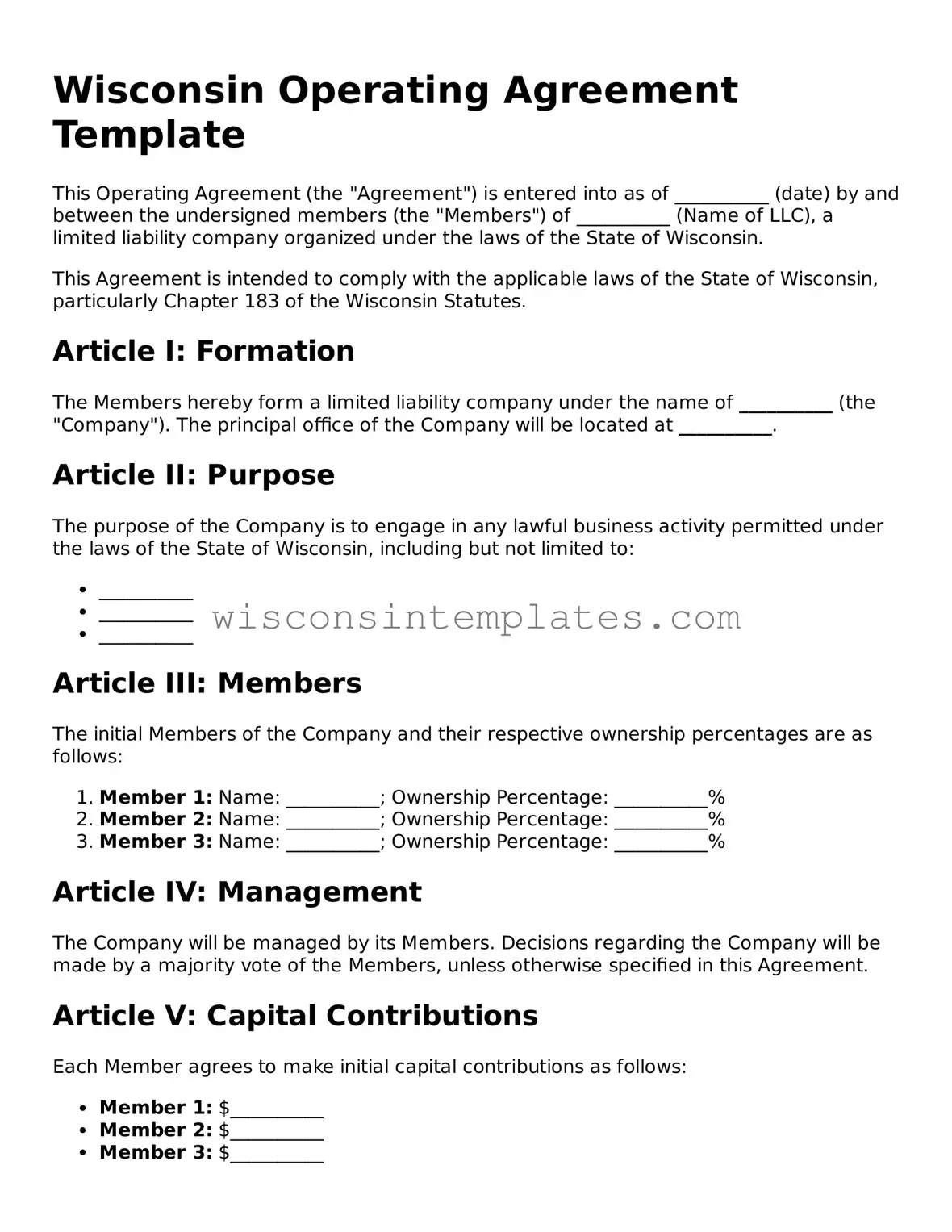In the realm of business formation, particularly for Limited Liability Companies (LLCs) in Wisconsin, the Operating Agreement form plays a pivotal role. This essential document outlines the internal structure and operating procedures of the LLC, serving as a blueprint for how the business will be managed and operated. It details the roles and responsibilities of members, establishes the distribution of profits and losses, and clarifies the procedures for adding new members or handling member departures. Furthermore, it addresses important aspects such as decision-making processes and dispute resolution methods, ensuring that all members are on the same page regarding the governance of the company. By having a well-crafted Operating Agreement, members can protect their interests, minimize misunderstandings, and create a solid foundation for their business operations. This document not only fosters transparency among members but also provides a framework that can help prevent potential conflicts down the road.
